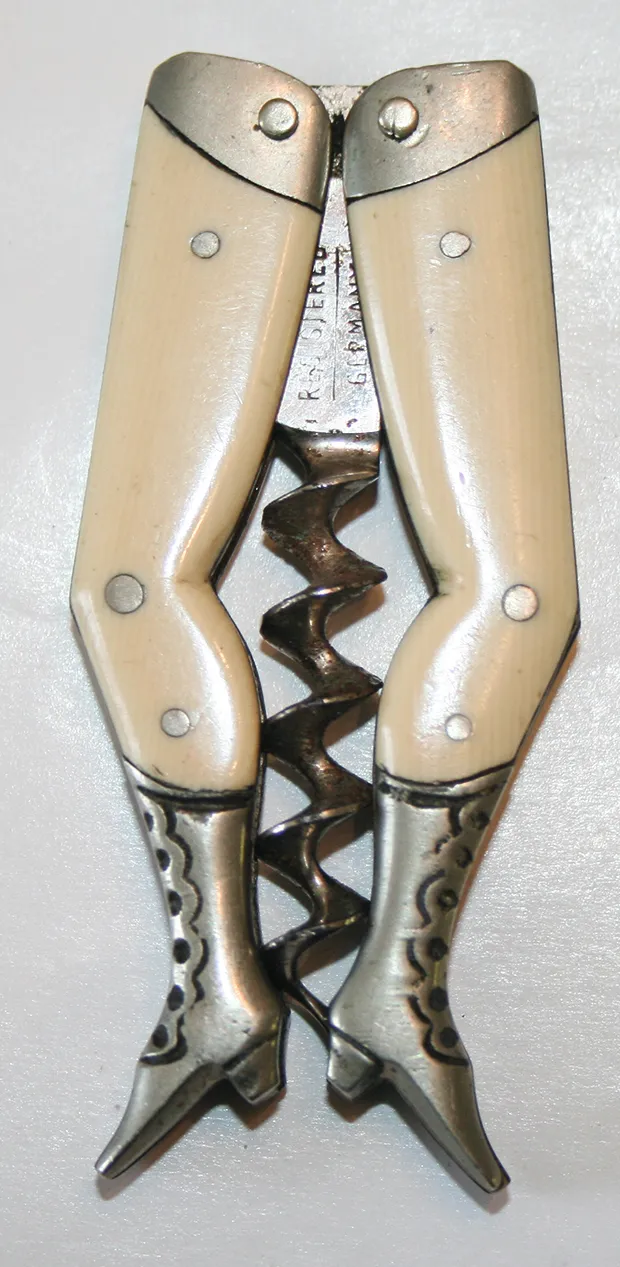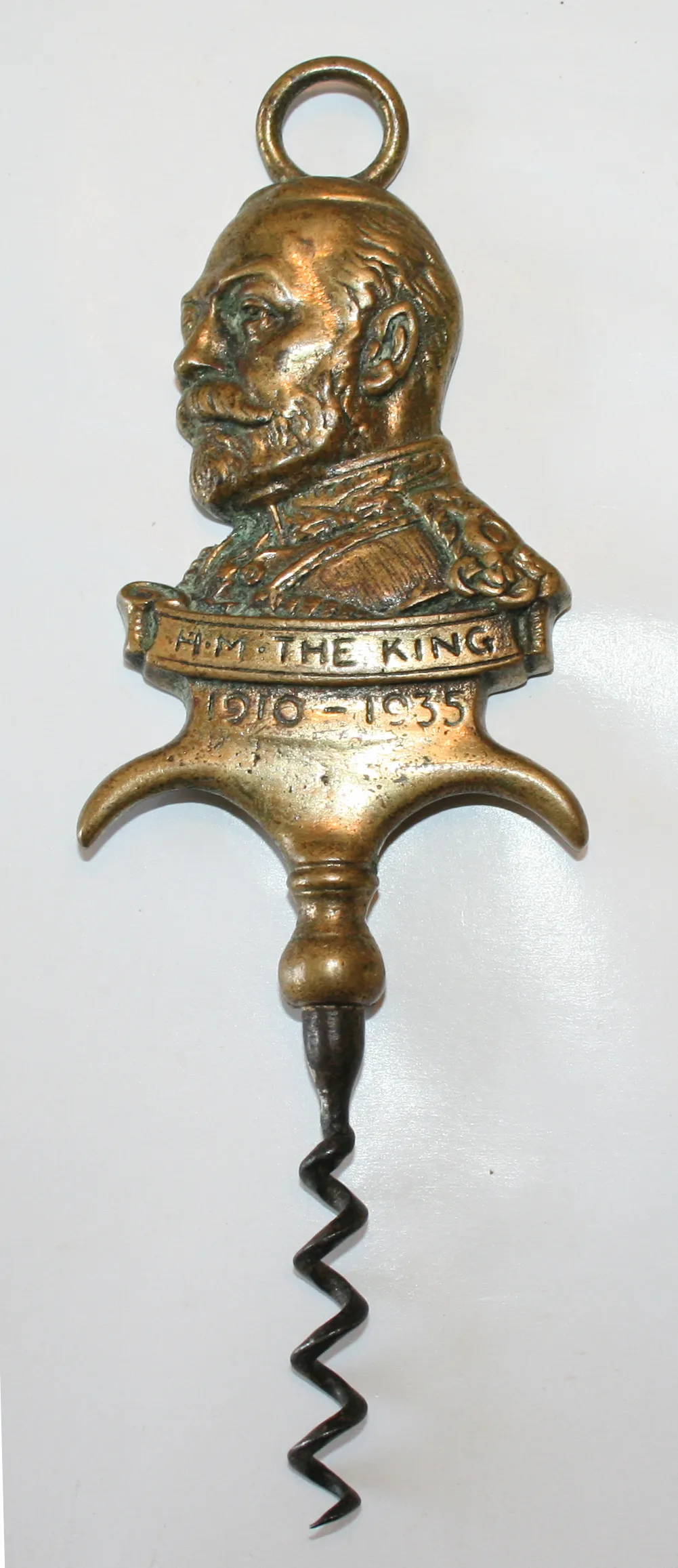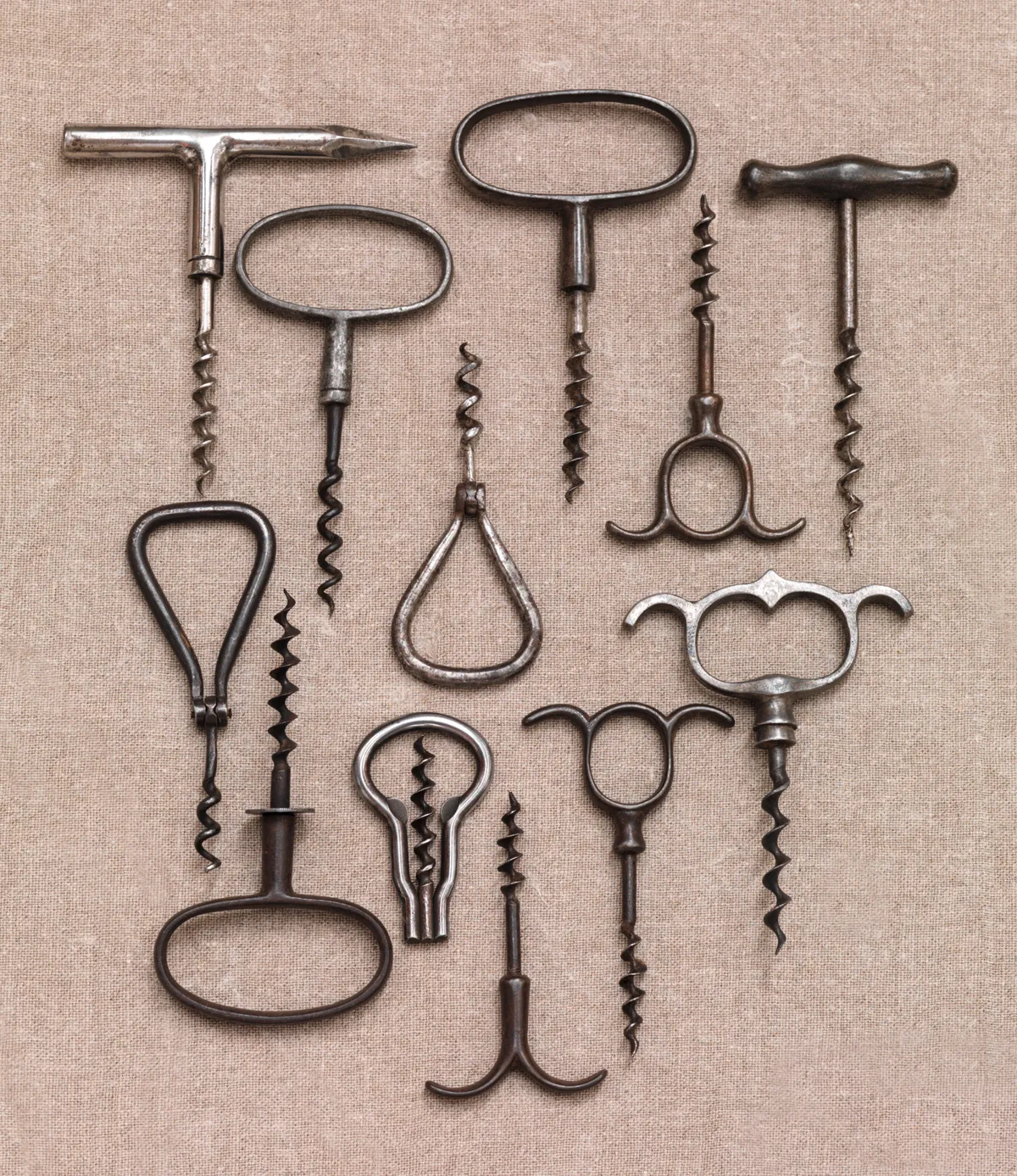As the gavel fell at Reeman Dansie Auctioneers in Colchester on26th November 2014, a roundof applause filled the room. An ‘unusualVictorian corkscrew’, estimated to fetch around £400–£600, had sold for an eye-watering £40,000 to an anonymous buyer. It was – and remains – the most expensive corkscrew sold at auction, ever.
‘It was a rare ratchet mechanism Charles Osborne- patented corkscrew made using iron and wood that was in the foundation of the Old London Bridge for 656 years,’ enthuses Reading-based collectorand dealer PeterBorrett. ‘Collectors getexcited about ratchet corkscrews anyway,but this one was ingreat condition withan inscription andthe provenance was fascinating, too.’
The anonymousbuyer turned out tobe Ion Chirescu – a wealthy Romanianwho has spent the past decade amassing the world’s largest collection of corkscrews and dominating the market. His purchases are now housed in a shiny new museum in Bucharest, where aisles of well-lit cases display Ion’s impressive and varied hoard of over 30,000 antique corkscrews.

‘He suddenly just appeared,’ says Peter. ‘When somebody new comes on the scene like that,
it has a big impact. He’s builtthe best collection in the worldin a very short time. For years, anything he didn’t have, he would just buy it on eBay – whatever the price. It was good for me, because I was selling stuff!’
Fortunately, you don’t have to be a millionaire to start collecting antique corkscrews. ‘You can get one that’s a hundred years old for a few pounds,’ says Peter. ‘Initially I just picked up a few here and there for 50p–£1, but I’m the sort of person who’s all or nothingso I started buying and selling pieces to finance my collection.’ Peter now has ‘around 3,000’ corkscrews – 800 in his private collection and the rest for sale.
Although entry-level prices are accessible, numbers quickly spiral up if it’s a known patent that
was mass-produced. ‘A Victorian double-lever corkscrew by James Heeley, for instance, would fetch about £50,’ reveals Peter. ‘There are rare corkscrews that fetch more, too, but finding those is difficult. You’re competing witha lot of other people. You can have 20 regional auctions with corkscrew lots and only one of them will have a really good piece in it that’s worth £1,000 or more.’
Corkscrews first emerged in the early 1700s, when wine bottles began to have tight-fitting corks. Prior to that, wine wasn’t stored for longevity and corks could be removed with a knife. Samuel Henshall created the very first patented British – and worldwide – corkscrew in 1795. ‘It was made in conjunction with Matthew Boulton at his Soho manufactory in Birmingham,’ reveals Peter. ‘Henshall’s design had a little button on it to compress the pull and many ‘Henshall-type’ corkscrews were made by other makers later.’

Early corkscrews were simple but when the Victorians came along with their manufacturing ingenuity, hundreds of patents came out. ‘All the mechanical designs have different actions,’ explains Peter. ‘Concertina ones, for example, first appeared in 1884 when a design was patented by Marshall Wier. All the other concertina corkscrews then descended from that design.’
Makers in France, Germany, Italy and America also came up with different ideas at this time and there are hundreds of sub- genres within the corkscrews category. Antique versions were made in a plethora of materials– scrimshaw, horn, wood, ivory, silver, brass, bronze – the diversity of designs appeals to collectors and attracts new ‘helixophiles’ to what Peter jokingly refers to as: ‘the twisted hobby’.
Folding or sheathed corkscrews were often kept in a gentleman’s jacket pocket and whipped out when needed to entertain fellow drinkers, so – as with vesta cases – some designs were a bit risqué. There are 1950s American ‘Pig Butt’ corkscrews where the screw is a curly tail, and various smutty takes on a wooden sailor. In the 1890s, German manufacturers made cheeky corkscrews that were fashioned like ladies’ legs. ‘These corkscrews always make people laugh and they look great in groups,’ says Peter. ‘They were made up until the 1930s and you get later repro pieces, too. The smaller ones are more valuable than bigger ones and there are so many variations; you get striped stockings in different colours, flesh-topped legs and no stockings at all – the most expensive.’

Condition is king for all corkscrew hunters. Typical damage to look out for when buying includes chips and cracks to the handle, rust, tarnish or pitting to the metalwork and damage to the mechanism. The vast majority of corkscrews have no makers’ marks on them at all but if they have a ‘fancy shank’ or a maker’s mark, prices go up.
So, what’s the best corkscrew in terms of performance? Peter rates ‘rack and pinion’ ones. ‘Those
are the easiest to use because you just turn a handle,’ he explains. ‘But, despite my collection, I’m not really a wine-y type. I actually prefer a beer in the pub!’
Where to buy antique corkscrews
1
Corkscrews Online
Collector Peter Borrett’s website with many corkscrews listed for sale, plus useful buying advice including how to spot fakes.corkscrewsonline.com
2
Andre Burgos Epicurean Antiques
An American dealer with a great selection of European and American corkscrews. andreburgos.com
3
Corkscrew Appraisals
Collector Steven Webb’s website has a small selection of collectable corkscrews for sale. corkscrewappraisals.com
4
The Virtual Corkscrew Museum
Collector Don Bull sells via his informative website. bullworks.net/virtual.htm
Where to see antique corkscrews
5
Museum of Romanian Records, Bucharest
Dip into Ion Chirescu’s awe-inspiring collection (and 35,000 pressing irons, but that’s another story…) museumofromanianrecords.com/corkscrew-collection/

